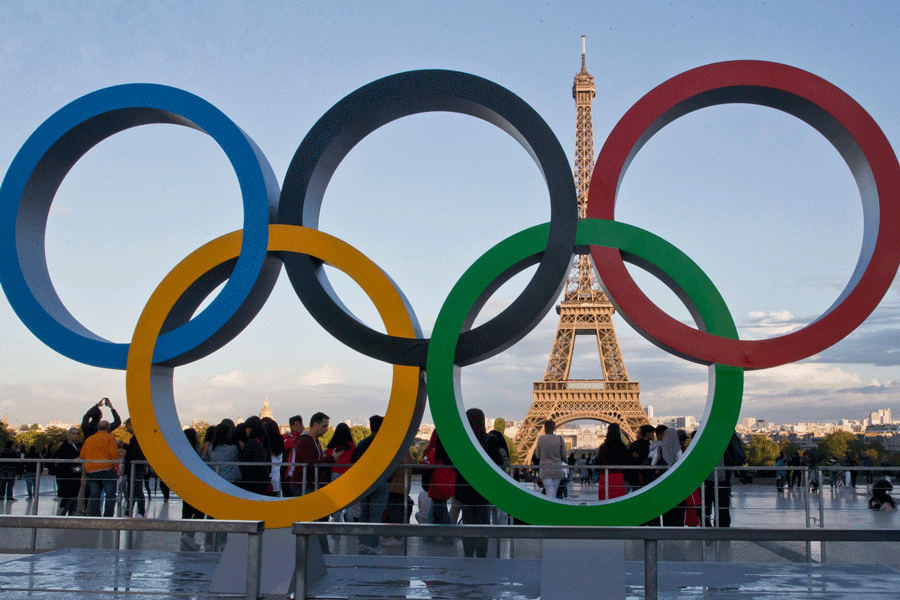When Baron Pierre de Coubertin first imagined the modern Olympic Games, he had in mind a model which was obviously inspired by Ancient Greece but also by the “total work of art” as advocated by Richard Wagner. The Games were not a simple sporting competition, but an artistic event that combined the movements of the athletes with other forms of art — such as music. Music has indeed featured prominently at the Olympics. The German composer, Richard Strauss, performed at the 1936 Berlin Games, while artists ranging from Freddie Mercury to Vangelis, from Philip Glass to John Williams, have all been involved in composing or performing music at various Olympic Games.
Coubertin’s vision also included art competitions. At the Stockholm Games in 1912, architecture, literature, music, painting, and sculpture featured alongside fencing or tug of war. Interestingly, Coubertin won the gold medal for literature, having entered the competition with an “Ode to Sport” written in German under a pseudonym. Subsequently, each of the Olympic Games staged such competitions, sometimes in partnership with museums — the 1932 Olympic Games included an exhibition at the Los Angeles Museum which proved to be extremely popular with the public. However, these competitions barely survived after the War and they were abandoned in 1952. In their place, various cultural manifestations were encouraged in keeping with the spirit of the first article of the Olympic Charter: “Blending sport with culture and education, Olympism seeks to create a way of life based on the joy of effort, the educational value of good example, social responsibility and respect for universal fundamental ethical principles.” Such events, sometimes referred to as the ‘Cultural Olympiad’, try to keep alive the relationship between sports and the arts.
Leading up to the Paris Games this month, art exhibitions have taken over Paris — and indeed France — transforming institutions into advertisers for the Games. The Louvre Museum tracks the classical sources of the modern Games. The Musée Marmottan Monet, which houses some of Claude Monet’s finest paintings, has put up an exhibition about artists and sports between 1870 and 1930. Its display includes paintings of horse-riding, boxing, swimming or rowing by painters such as Gustav Caillebotte, George Bellows and others. The Museum for the History of Immigration favours a more political approach to the event, highlighting the links between sports and politics since the end of the 19th century. The Institute of Architecture offers a history of stadiums. Other museums prefer to leave their displays undisturbed but have asked sportspersons to comment on works from their collections or organise guided tours of some of their “sports works". The Museum of Art and History of Judaism invites visitors to discover works by the Hungarian-born photographer, André Steiner, depicting bodies in movement — divers, athletes, dancers are all caught in the air, as if flying. He was himself a decathlon champion at the World University Games in 1928 and a swimming coach in Vienna at a Jewish sports club.
Sportspersons can also be artists and vice-versa. Walter Winans, who won the first gold medal for sculpture in Stockholm, had previously won medals at the 1908 and 1912 Games for shooting. The celebrated fauve painter, Maurice de Vlaminck, also won cycling races and was a confirmed rower.
What is the purpose of the Cultural Olympiad? While sports may be the occasion for important cultural activities and festivals, such as at the London Olympics which culminated in the London 2012 festival, it is also a way for organisers to try and generate enthusiasm around the event. But the union of sports and the arts advocated by Coubertin is often nothing more than a showcase for the biggest sporting event on the planet. The medals won by artists between 1912 and 1948 have disappeared from the official lists of medals and events. But visitors to these exhibitions may discover a more meditative approach to sports.
Alexis Tadié is Professor of English Literature at Sorbonne University, Paris











